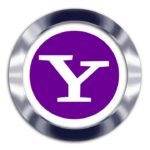
A computer is constructed of several different software and hardware components: processors, memory, peripherals, software applications and various other input and output devices. Understanding and managing each component before use can be extremely difficult for both programmers and end users. It is the job of the Operating System to provide a systematic and controlled allocation of the computer’s processors, main memory, disk drives, and peripherals and to establish a user interface.
What is an Operating System (OS)?
“An OS is a program that controls the execution of application programs and acts as an interface between applications and the computer hardware” (Stallings, 2012, p.48).
Functions of the Operating System
According to Stallings (2012) the OS can be thought of as having three main objectives as follows:
Convenience: An OS makes the computer more convenient to use.
Efficiency: An OS allows the computer system resources to be used in an efficient manner.
Ability to evolve: An OS should be constructed in such a way as to permit the effective development, testing, and introduction of new systems functions without interfering with service.
The Operating System is in fact the most important software on a PC. How does it make things convenient? An OS adds to the efficiency of a computer by ensuring the CPU is not sitting idle while waiting for input and output operations. It does this by managing which programs are using which resource, granting resource requests and mediating between conflicting requests from different programs and users. For example, if three programs requested the use of a printer at once, it is the job of the OS as a resource manager to resolve this issue – it may do this by scheduling the requests.
Due to the exponential advance in the technology sector, users now have a wide range of Operating Systems to choose from. A few names that are currently popular in the market include Android, iOS, Windows, Linux and Unix.
We hope the article has helped you explore the basics of operating system. You may also like reading Waterfall model – definition, advantages and disadvantages. If you liked this article, please share it by clicking on the icons below.
The article publication date: 08 July 2017
Further Reading/References
TanenBaum, A. (2009) Modern Operating Systems, 3rd ed, Upper Saddle River, N.J: Prentice Hall.
Stallings, W. (2012) Computer Systems: Internals and Design Principles, 7th ed, Upper Saddle River, N.J: Prentice Hall.
Photo credit: www.pinterest.com
Author: Marjana Chowdhury
Marjana Chowdhury is a graduate of Queen Mary, University of London. She has a keen interest in business, accounting and computer science. She writes regularly online on a variety of subjects.


